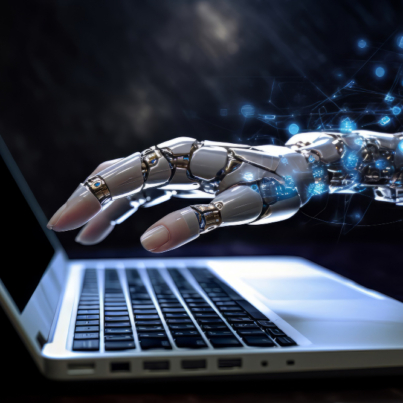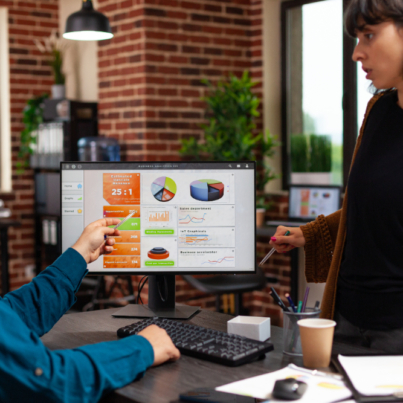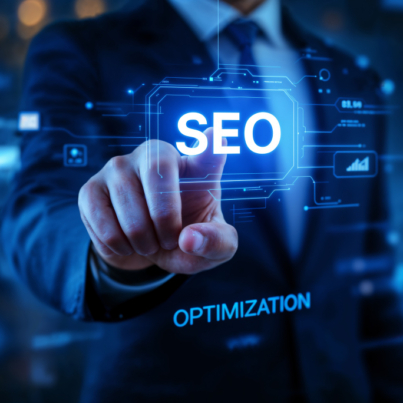The landscape of digital marketing is undergoing a radical transformation, thanks to the rapid evolution of artificial intelligence (AI). As we move further into 2025, AI is not just a futuristic tool—it’s already at the core of successful marketing strategies across industries. From predictive analytics to personalized campaigns and marketing automation, AI is reshaping how businesses interact with customers, optimize their marketing efforts, and drive revenue growth.
In this guide, we will explore how AI is transforming digital marketing in 2025, the AI-driven strategies that businesses are adopting, and how you can harness these innovations to stay ahead of the competition.
The Role of AI in Modern Digital Marketing
AI is revolutionizing digital marketing by enabling businesses to automate tasks, enhance customer insights, and personalize content like never before. As consumer expectations evolve, they expect more relevant, personalized experiences—something that traditional marketing techniques struggle to deliver at scale. AI helps businesses meet these expectations by analyzing vast amounts of data, predicting customer behavior, and optimizing campaigns in real-time.
Key AI-Driven Marketing Strategies in 2025
1. AI-Powered Marketing Automation
One of the most significant ways AI is transforming digital marketing is through automation. AI can streamline numerous marketing tasks, from email campaigns to social media posts and customer follow-ups, reducing manual labor while improving efficiency and consistency.
How AI Automates Marketing:
- Email Marketing Automation: AI tools can segment your audience, tailor email content based on user behavior, and send personalized messages at optimal times. With AI-driven automation, businesses can run highly efficient email campaigns without the need for constant manual intervention.
- Chatbots and Virtual Assistants: AI-powered chatbots are increasingly used on websites, apps, and social media platforms to provide instant customer support, answer queries, and guide users through their buyer’s journey. These chatbots can handle a wide range of tasks, from scheduling meetings to assisting with product recommendations.
- Social Media Management: AI can schedule posts, optimize timing for maximum engagement, and analyze social media conversations to identify trends. It can even generate content ideas by analyzing what’s trending in your industry.
Tools for AI-Powered Marketing Automation:
- HubSpot: An all-in-one marketing automation tool that integrates AI features for personalized email campaigns, lead nurturing, and performance analytics.
- Mailchimp: Offers AI-driven features for automating email campaigns, segmenting audiences, and optimizing send times.
- Drift: An AI-powered chatbot platform that automates customer interactions on websites and messaging platforms, improving lead generation and customer support.
2. Predictive Analytics: Forecasting Consumer Behavior
Predictive analytics is one of the most powerful applications of AI in marketing. It uses historical data and machine learning algorithms to predict future outcomes, enabling businesses to make data-driven decisions and optimize their marketing efforts.
How Predictive Analytics Works:
- Customer Segmentation: AI can analyze customer behavior and segment your audience into distinct groups based on factors like purchasing habits, browsing behavior, and demographics. This allows businesses to target specific groups with personalized campaigns that are more likely to drive conversions.
- Demand Forecasting: AI algorithms can predict future demand for products or services based on past trends, seasonal factors, and external variables. This helps businesses optimize their inventory and marketing strategies to meet consumer demand in real-time.
- Churn Prediction: By analyzing customer data, AI can identify patterns that suggest a customer is likely to churn (stop using a product or service). Businesses can use this information to proactively intervene with personalized offers, support, or content to retain at-risk customers.
Tools for Predictive Analytics:
- Google Analytics 4: Includes AI-powered features like predictive metrics to forecast customer behavior and provide insights into future trends.
- Salesforce Einstein: Uses machine learning to deliver predictive insights about your customers, sales forecasts, and potential churn risks.
- Pega Marketing: Provides AI-powered predictive analytics for real-time decision-making and personalized campaign optimization.
3. Personalized Campaigns: Creating Tailored Experiences
AI is the backbone of personalization in digital marketing. In 2025, businesses are increasingly using AI to tailor their marketing efforts to individual customers, offering highly relevant content, products, and services based on their preferences and behaviors.
How AI Personalizes Campaigns:
- Dynamic Content Creation: AI can generate personalized content on websites, landing pages, and emails based on a customer’s browsing history, purchase behavior, and interactions with the brand. For example, e-commerce sites use AI to recommend products that a user is most likely to purchase based on their browsing history.
- Personalized Advertising: AI enables advertisers to deliver targeted ads to individuals based on their interests, demographics, and past interactions with the brand. By analyzing user data, AI can optimize ad creatives, placement, and bidding strategies in real-time for maximum ROI.
- Website Personalization: AI can tailor website experiences for each visitor, adjusting content, layout, and product recommendations based on individual user profiles and behavior.
Tools for Personalizing Campaigns:
- Dynamic Yield: Offers an AI-powered platform that allows businesses to personalize content, recommendations, and campaigns based on user data and behavior.
- Optimizely: A personalization platform that uses AI to test and personalize content on websites and digital experiences in real time.
- Adobe Experience Cloud: Provides AI-driven insights and tools to create personalized customer journeys, from website content to advertising.
4. AI for Enhanced Customer Insights
AI is enabling businesses to gain deeper insights into customer behavior and preferences. By analyzing vast amounts of customer data, AI can uncover patterns and trends that were previously invisible, helping businesses make better decisions and optimize their marketing strategies.
How AI Analyzes Customer Insights:
- Sentiment Analysis: AI can analyze customer feedback on social media, product reviews, and support tickets to determine the overall sentiment of your customer base. This helps businesses understand how customers feel about their products or services and address issues proactively.
- Customer Journey Mapping: AI can track and analyze each touchpoint in the customer journey, from first contact to final purchase. This allows businesses to understand which marketing channels are driving the most engagement and conversions, as well as identify areas for improvement.
- Behavioral Targeting: AI can track user behavior across multiple platforms and devices to build a complete profile of customer interests and preferences. Marketers can then use this data to deliver hyper-targeted ads and content.
Tools for Analyzing Customer Insights:
- Sprinklr: A customer experience management platform that uses AI to analyze social media data and provide insights into customer sentiment and engagement.
- HubSpot Analytics: Offers AI-powered tools to track user behavior, segment audiences, and analyze the effectiveness of marketing campaigns.
- Crimson Hexagon: Provides advanced sentiment analysis and social listening tools powered by AI, helping brands understand customer opinions and trends.
5. AI-Driven Creative Optimization
In 2025, AI will play a significant role in optimizing marketing creatives such as ad designs, copy, and images. By analyzing data from past campaigns, AI can help businesses understand which creative elements are most likely to drive engagement and conversions.
How AI Optimizes Creative:
- A/B Testing Automation: AI can automatically run A/B tests on different ad creatives, copy variations, or email designs to determine which versions resonate best with your audience. This enables continuous optimization without the need for manual testing.
- Ad Copy Generation: AI can generate compelling ad copy, emails, and social media posts based on insights from past campaigns and audience preferences. This not only saves time but also ensures your messaging is always relevant and optimized for engagement.
- Visual Content Creation: AI tools can generate images and videos based on user preferences or trending topics. This allows brands to create dynamic, attention-grabbing visuals tailored to their audience’s tastes.
Tools for Creative Optimization:
- Copy.ai: Uses AI to generate ad copy, product descriptions, and social media posts tailored to your target audience and brand voice.
- Canva: In addition to design features, Canva offers AI tools that automatically suggest design layouts, fonts, and colors that best suit your brand’s needs.
- Google Optimize: An AI-powered tool for conducting A/B testing and personalizing web experiences based on real-time user data.
6. AI for Customer Retention and Loyalty
AI isn’t just about attracting new customers—it’s also a powerful tool for improving customer retention and loyalty. In 2025, businesses are leveraging AI to keep customers engaged and foster long-term relationships.
How AI Drives Customer Retention:
- Personalized Loyalty Programs: AI can analyze purchase history and behavior to create personalized loyalty rewards programs that incentivize repeat business.
- Predictive Customer Support: AI can predict when customers might need assistance or are likely to encounter issues. By offering proactive support through AI-powered chatbots or customer service tools, businesses can increase customer satisfaction and reduce churn.
- Post-Purchase Engagement: After a purchase, AI can help businesses engage customers with personalized follow-up messages, product recommendations, and tailored content to encourage repeat purchases.
Tools for Customer Retention:
- Zendesk: AI-driven customer support tools that allow businesses to engage with customers proactively and offer personalized assistance.
- Smile.io: A loyalty program software that uses AI to personalize rewards and promotions based on customer behavior.
- Klaviyo: An email marketing automation tool that uses AI to send personalized follow-ups, product recommendations, and loyalty incentives.










Leave A Comment